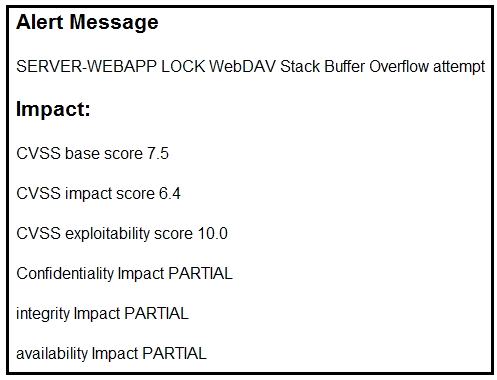Cyber Monday 2024! Hurry Up, Grab the Special Discount - Save 25% - Ends In 00:00:00 Coupon code: SAVE25
Cisco Exam 300-215 Topic 2 Question 78 Discussion
Actual exam question for
Cisco's
300-215 exam
Question #: 78
Topic #: 2
[All 300-215 Questions]
Topic #: 2
Refer to the exhibit.

After a cyber attack, an engineer is analyzing an alert that was missed on the intrusion detection system. The attack exploited a vulnerability in a business critical, web-based application and violated its availability. Which two migration techniques should the engineer recommend? (Choose two.)
Suggested Answer:
C, E
Lucy
5 months agoPamella
3 months agoGalen
3 months agoJacqueline
3 months agoCarisa
4 months agoMerilyn
4 months agoWhitney
4 months agoBeatriz
5 months agoStanton
5 months agoAlberta
4 months agoRodrigo
4 months agoFarrah
4 months agoJoesph
4 months agoShawnta
5 months agoSalley
5 months agoAmira
5 months agoCharlette
5 months agoCharlette
5 months agoWillodean
5 months agoWillodean
5 months agoBeatriz
6 months ago